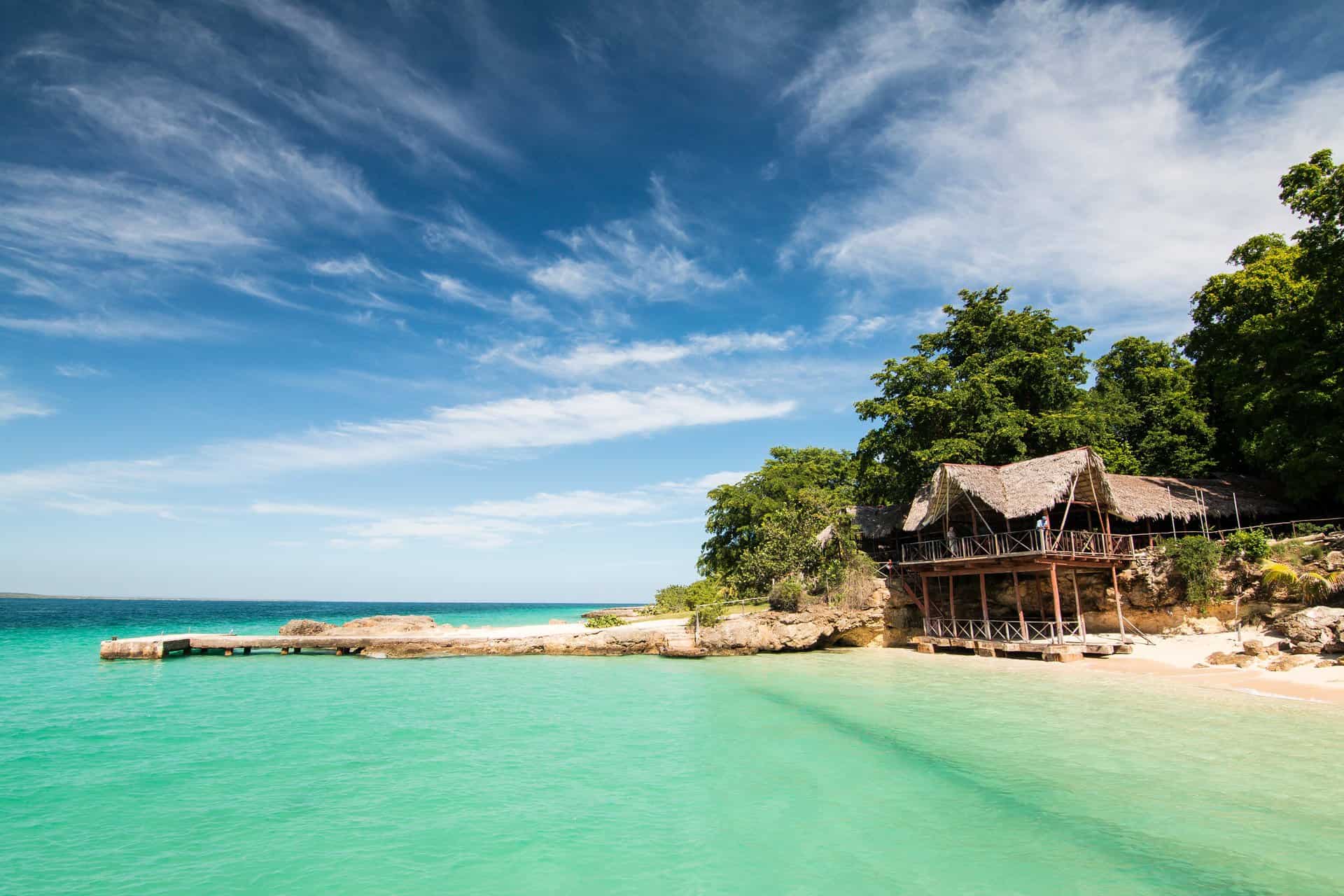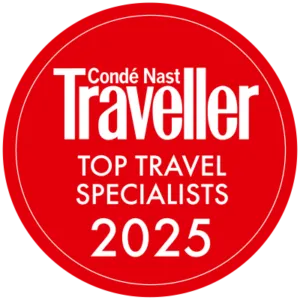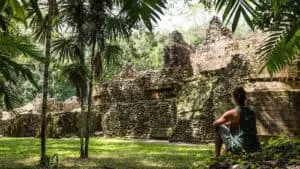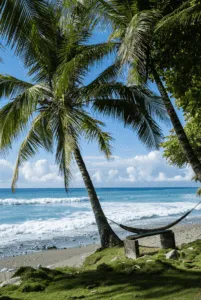
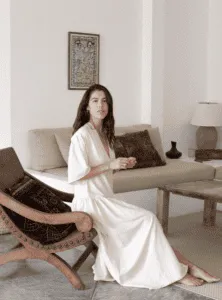
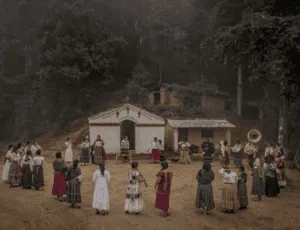
Inspired by the stories of her family of Yaqui descendants, Paola Castelo founded Vuelta Sur to preserve and celebrate Mexican tradition.
Vuelta Sur is an online platform dedicated to preserving and amplifying Mexican culture through art. By collaborating with museums, contemporary artists, and master artisans to showcase their stories and offer global access to their work, Vuelta Sur celebrates the stories of the people shaping culture. It is a tribute to Mexico, its people, and their compelling narratives.
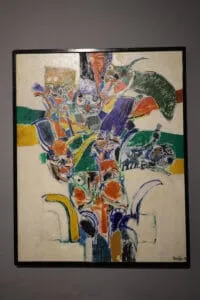
Where are you at this moment? What are you looking at?
Right now, I’m in beautiful Baja California Sur, looking out at palm trees and the Pacific Ocean.
Tell us about an experience that impacted your decision to start Vuelta Sur:
There were many moments that led to this decision. From a young age, I’ve always organised or fundraised for educational workshops in rural communities across Mexico. This early work naturally evolved into the mission of our organisation, allowing us to support these communities in a more sustainable, impactful way.
Starting Vuelta Sur began with a desire to share parts of the old Mexico I missed so much. After 15 years in Canada, my longing for Mexico was profound, and as an artist, I found myself deeply immersed in research—reading books on history, ancient cultures, architecture, and more. Sharing rare images from these books on Instagram quickly attracted others who felt the same connection to Mexican culture. The page grew overnight, bringing together an incredible community of artists, museums, and galleries, all helping to grow Vuelta Sur into what it is today.

How did you choose the name Vuelta Sur?
“Vuelta Sur” is a bit of a play on words. While the literal meaning is “circling the south,” for me, it represents a journey—a trip from the north or another place to the south. It’s a full-circle experience: you go south, immerse yourself, learn, and return to where you started, but with a fresh perspective and a deeper understanding.
Were you creative as a child?
From a young age, I was always drawing and sewing. I learned to sew early on, using a 1910 Singer sewing machine that used to belong to my great-grandmother, and from that moment, I couldn’t stop—I made clothes for my dolls and decorations for my aunts’ homes. I also loved working with wood and would carve anything I found. Growing up in a small town, I spent much of my time at our family ranch, surrounded by the desert landscapes of Sonora.

Growing up, who were your heroes /heroines?
When I left home at 18, moving from a small town to Canada on my own without knowing a word of English, I came to a profound realisation: my heroine was my mother. Experiencing how difficult it was to build a life alone, I was in awe of how my mother raised two kids as a single mother while also supporting my grandparents. Her work ethic and strength through the toughest times still inspires me.
What artists of the past do you most admire and why?
I really admire Leonora Carrington—not only for her incredible art but for her courage in leaving behind a life she didn’t enjoy in England, despite having “everything.” Her decision to move to Mexico City after the war is a powerful part of her story, one that resonates deeply.
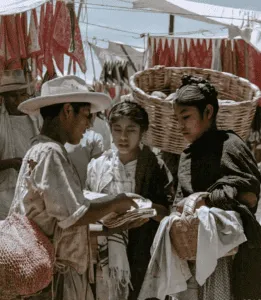
What art of today excites you?
When traditional materials and craftsmanship merge with contemporary techniques and methodologies, especially with natural materials, something powerful happens. Ancient culture meets modern innovation, resulting in creations that honour the past while speaking to the present.
Thoughts on AI and its role in the future of creativity?
AI is an incredible tool, but I’m hopeful that people will continue to value art created by human hands. If we move too far in the other direction, I feel the true essence of the art world could be lost—or at least, it would lose something deeply meaningful to me.
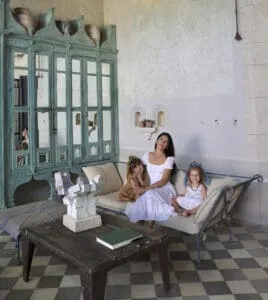
Tell us about your upcoming collaborations? What are you looking forward to?
This past year has been incredibly exciting for Vuelta Sur. We’ve had the opportunity to collaborate with the Frida Kahlo Museum, the Anahuacalli Museum (Diego Rivera’s), and are currently involved in fundraising efforts to build a museum in Oaxaca dedicated to honouring the Mazatec community.
Can you share a recent project you’ve done that embodies your gifts?
While directing the videos for our social media showcases some of my “visual” gifts, I prefer to work with my hands. I would say my artworks truly embody most of my creative talents.
What brings meaning to your life outside of work?
My daughters bring me so much joy. Their excitement and energy for life, along with their ability to appreciate and notice every little detail, is absolutely wonderful.
What art is in your personal collection?
I collect a diverse range of artists, especially the unique art from Mexico in the 1950s. That era was truly special. I also collect contemporary works from today’s Mexican artists, ensuring that my collection focuses exclusively on pieces created by Mexican talent.
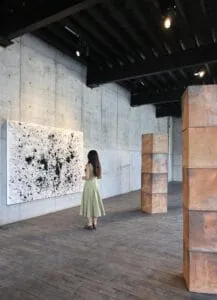
If we were to visit Mexico city for a weekend, what’s on your list?
That’s quite a list! I wouldn’t miss the Anthropology Museum; it’s a fantastic way to immerse yourself in the country and its culture. La Lagunilla market is another must-visit—be sure to eat there; the food is incredible! I’d also suggest checking out a salsa club, even if it’s just to watch. And, of course, dining at one of the best restaurants in town is essential. The culinary scene in Mexico City is exceptional, showcasing the beautiful collision of ancient and modern influences—there’s truly nothing like it.
Where do you go to immerse yourself in emerging art?
The galleries and museums in town are the best places to experience the latest art.
A few galleries you love?
Monclova, Kurimanzutto, Campeche, Jo_hs.
Where to shop, eat, and stay?
Shop: Ziiropa store has such a great selection.
Eat: Expendio de Maiz, Maximo Bistrot, Contramar, Loup wine bar.
Stay: Casa9 or Room Juana.
What Mexican artists should collectors keep their eyes on?
Sandra del Pilar, Alejandra Venegas, Abraham Gonzalez Pacheco.
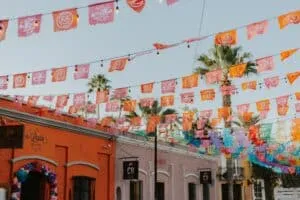
We see your foundation does a lot of work in Baja – how has the art scene changed over the last 5 years?
The art scene in Baja hasn’t seen much change yet, but there are many exciting projects underway like ABC Art Baja. On our foundation side, we collaborated with a Buddhist temple to develop workshops for youth that blended art and ocean themes.
How would you suggest we spend a weekend here?
I would rent a 4×4 to explore deep into the desert, particularly visiting Fox Canyon. When I say Baja, I’m mainly referring to Todos Santos, as the peninsula is quite large—spanning 1,220 km. My familiarity lies primarily with the area around Todos Santos, where my family spends part of the year in Pescadero, located by the Pacific Ocean. On the other side is the Sea of Cortés, which is truly magnificent. This part of Baja isn’t known for its culinary experiences or nightlife; instead, we cherish the farm life and the dusty roads. It may take some time to adjust and understand, but it’s a wonderful place.
Where are you headed next?
We just returned from a month and a half of travel through Europe with our kids, visiting Greece, Portugal, Spain, and England. It was a lot to manage with two little ones! After being in Whistler most of the year away from Baja, we’re finally back to spend a few months here, and I’m really looking forward to some quiet, downtime, and time to create art in my studio here. Our next trip will probably be to NYC, followed by Mexico City for Art Week, which is my favourite time of year.
What do you never travel without?
I always have a book to read and my drawing book on hand—there’s always something new to dive into.
Related Stories
@plansouthamerica
